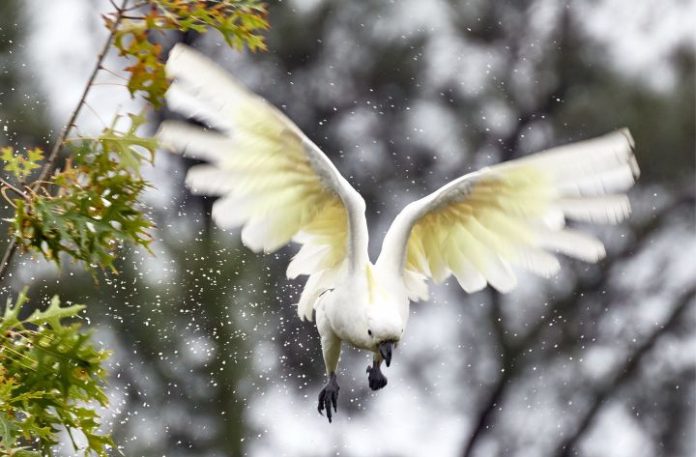Today’s Bird of the Day, the sulphur-crested cockatoo, was chosen by John Martin, Research Scientist, Animal Ecology Lab, Western Sydney University, based at the Taronga Institute of Science and Learning. He is also one of the authors of A Guide to the Creatures in Your Neighbourhood.
Martin said the cockatoo was a much-loved character across Australia.
“I and many others enjoy how cockies look at you, they observe you, and sometimes they decide that they want to get to know you better.
“Researching this species has provided me with a lot of joy, firstly because the birds are so interesting, intelligent, and social, and because so many people share my fascination with the loveable, loudmouth larrikin we call the sulphur-crested cockatoo.”
He admitted that cockatoos could also be a nuisance. “A great example is the unique behaviour of opening kerb-side garbage bins to scavenge a free feed: who doesn’t love a free feed!
“Of course, several pieces of day-old pizza isn’t my idea of a good feed.”
Martin said the bin-opening behaviour was spreading and he invited people to help map where it was and was not occurring as part of the 2022 survey for the Clever Cockie Project: https://tinyurl.com/y8a5xpl6.
“This research has shown that cockies learn new behaviours through social learning; that is, copying other cockatoos: similar to how humans learn.”

Engaging with urban birds
Martin encouraged one and all to take the time to observe the birds in their backyard, park or wherever they found themselves (“like watching welcome swallows high above the action at the SCG while cheering the Swannies”).
He said slowing down and observing the bird species you see, their behaviours, and how they changed with the seasons was a great way to connect with nature.
“By connecting with nature we have a greater appreciation and awareness of the life around us. Spending time in nature, even looking out your window at plants, clouds, anything natural has been shown to be good for our wellbeing.”
He said there were many ways to engage with urban birds, from books to citizen science.
“A good start is to learn the names of some of the species you see.
“A fun and interesting way to do this is to read A Guide to the Creatures in Your Neighbourhood. This book stems from The Urban Field Naturalist Project, which encourages and guides you to write short nature stories about your observations and experiences.
“Bird identification books or apps are also useful. Birds can be overwhelming as there are over 900 bird species in Australia, so using an app can make this easier.
“Reporting the birds your observe to our Big City Birds research or similar citizen science projects such as Birds In Backyards or eBird are also great ways to connect with and learn about the birds you see.”
_______________
Follow @southsydneyherald on Instagram to see our birds of the day and learn about protecting urban biodiversity.






